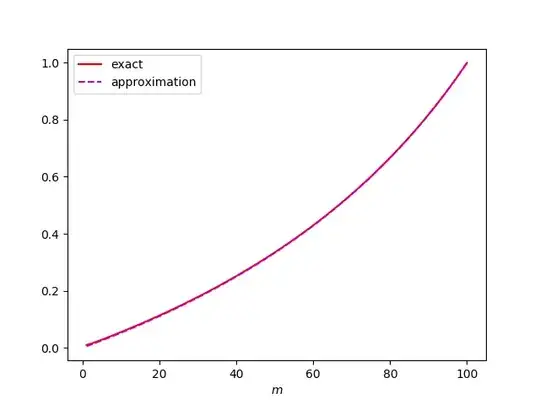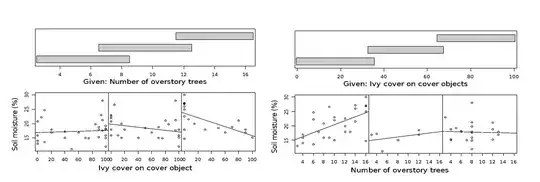I am examining how English ivy affects the occurrence of a salamander species under cover objects (e.g., logs). Soil moisture is assumed to be the major factor that affect their occurrence.
My hypothesized pathway: The presence/absence of salamanders under cover objects is either a direct consequence of changes in ivy-induced abioitc environment (i.e., drier soil) or an indirect result of changes in prey community that resulted from altered abiotic factors. But, there are multiple factors, other than English ivy, that affect soil moisture.

My questions are:
I think that a path analysis is most suitable for testing my causal mechanisms. But, given a small sample size (n = 71), is a path analysis appropriate?
Another potential problem for a path analysis is that the effects of English ivy on soil moisture seem to depend on the other factors (e.g., the number of overstory trees), as shown below. Are there any way to account for such patterns in a path analysis?

Are there any other analyses suitable for testing my hypothesized relationships? I am considering multiple (linear and logistic) regressions, but again my sample size is small AND regressions do not reflect my hypothesized causal relationships accurately.
I am using R, so any recommended code would be greatly helpful (I am a relatively new R user, though).